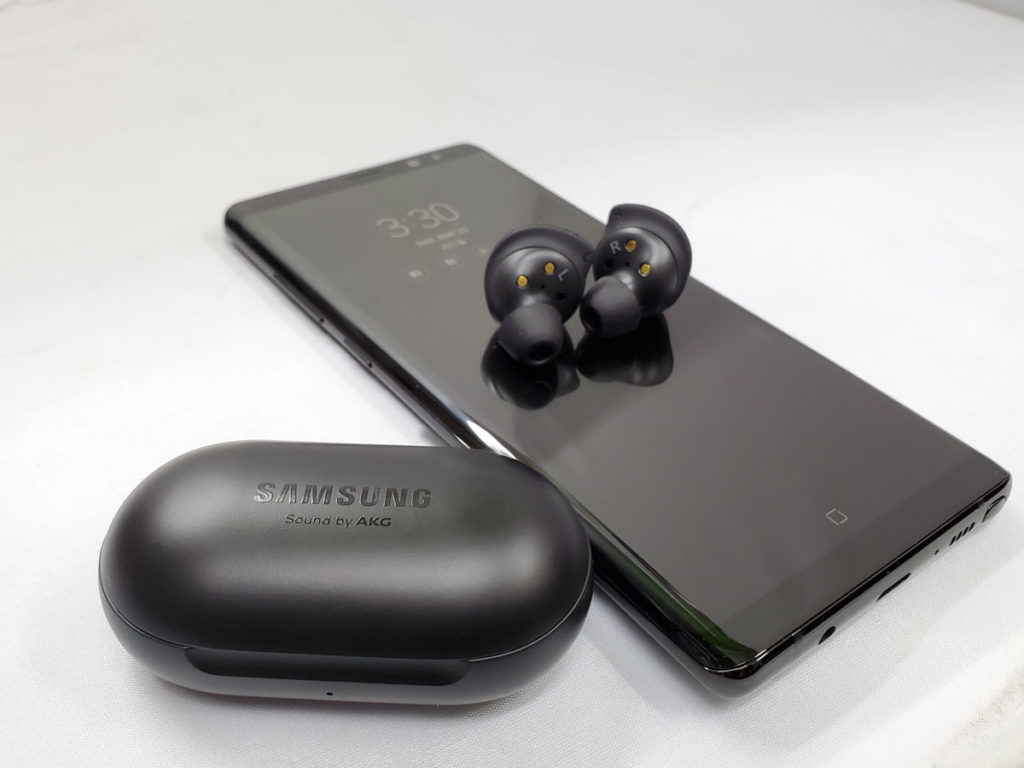If you haven’t poked your head out of the audiophile bubble in a while, I can fill you in on what’s going on in the normie world of consumer headphones in two words: true wireless. While we were arguing over what kind of cables we pair with our favorite flagship IEMs, the general population has been adamant about losing wires altogether. Now Samsung and AKG enter the arena with their Samsung Galaxy Buds.
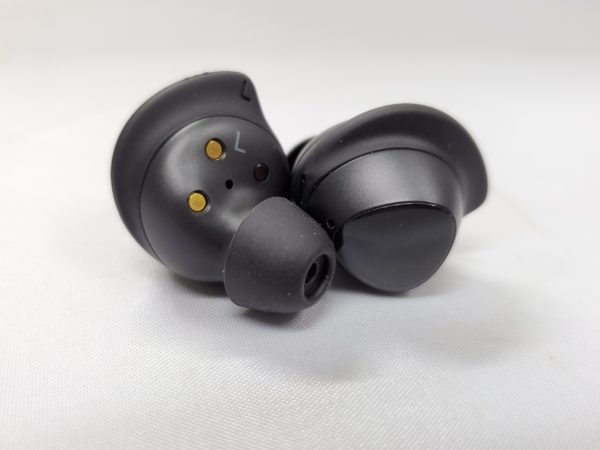
Samsung Galaxy Buds
You may have noticed one particular model of True Wireless in-ears gaining much more popularity than the rest: Apple’s Airpods. This would seem to be the obvious choice for many consumers since they are designed to function harmoniously with the massively popular “iPhone”. Thankfully, I have a Samsung Galaxy Note8 and I don’t have to worry about feeling any peer pressure. For us Android users, Samsung has given us an alternative.
I have to admit, when I first heard the name of these Bluetooth earphones, I thought the name was kind of funny. It sounds like a children’s animated series about a group of kids that get into all kinds of mischief while travelling in space. However, after demoing the Galaxy Buds, I can confirm that they are most definitely a set of in-ear headphones designed by Samsung and AKG. I’ve even spent enough time to form some opinions about them. So where should I start…
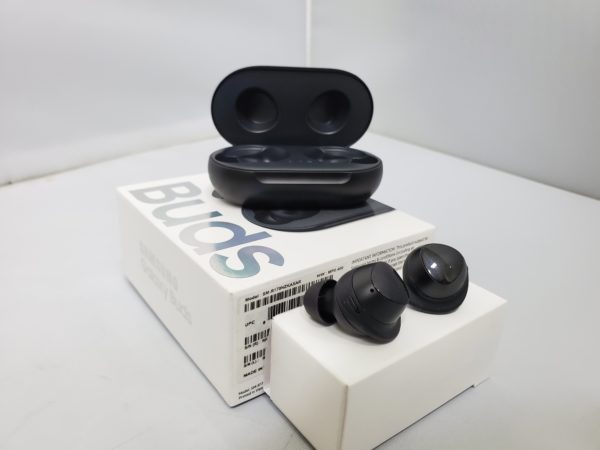
Features
Pairing
Pairing with a Galaxy device is easy. You just need to download the Smart Things app if you don’t already have it. With the app installed, you can just open the Bud’s charging case in front of your phone, and a pairing prompt will appear on your phone. If you have another phone you can just touch and hold both Buds at the same until they enter pairing mode and connect to them from your Bluetooth settings.
A Great App
To get the full effect of the Samsung Galaxy Buds, you’ll have to download the Galaxy wearable app. From here you can keep an eye on the battery level of your Buds, control EQ profiles, manage which notifications are allowed to interrupt your music, and alter touchpad controls. You can remove touchpad controls completely, with the “Lock Touchpad” option. I could imagine that this would be for people who might get annoyed about accidentally pausing their music when trying to adjust the fit.
Hold Onto your Buds
The “Find My Earbuds” feature is another useful addition to the Galaxy Wearable app. This triggers a little chirping sound from the headphones that makes them easier to locate in a cluttered space or deep in a backpack. I don’t know the distance the Buds would have to be in order for this function to function, but if you know they are nearby, this could save you some time or provide a little peace-of-mind.
Codecs
One feature I disliked out-of-the-box was the lack of volume control from the touch pads. I was happy to see that I was able to remap it, but it would’ve made more sense as a default feature. My first impression of the ambient mode a little lackluster when. However, after downloading and installing an update, the intensity and effectiveness of the ambience immediately improved.
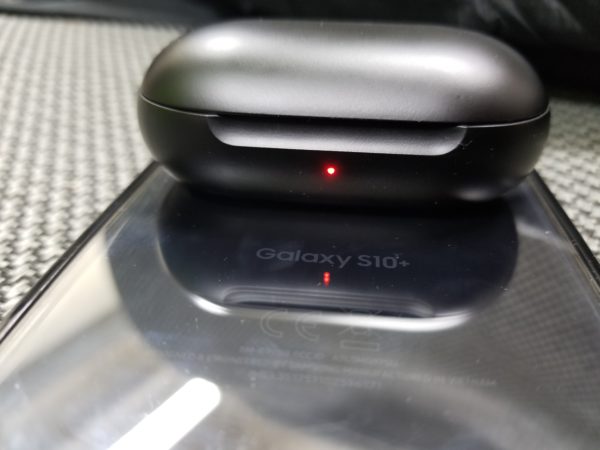
Battery Vitality on The Galaxy Buds
The G-Buds have a 6 hour battery life, and are granted an approximate 7 hours when storing them in their charging case. Those with a Samsung Galaxy S10 or Galaxy S10+ can increase this life even longer using Wireless PowerShare. To do this, you just need to select the Wireless PowerShare button from the top of your notifications drop-down window and place your Galaxy Buds case on the back of the phone.
One thing I dislike about the Buds is that despite being Bluetooth 5.0, they don’t offer a lot of codecs. They offer your standard AAC and SBC, but don’t use AptX HD (or any AptX for that matter) or LDAC. They make up for it by using Samsung’s own Scalable codec, but that’s not gonna fly with iPhone users or Android users without a Samsung.
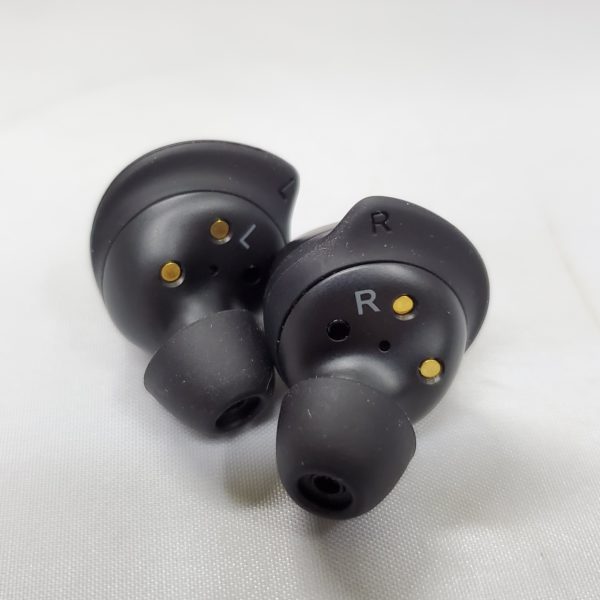
The Sound of the Galaxy Buds
Lows
I was caught off guard by the satisfyingly punchy low-end on the Samsung Galaxy Buds. Without playing with the in-app EQ, kick drums were deep and dynamic. Their bass extension doesn’t reach as far as higher-priced IEMs, but it’s more than enough for their price point. The bass that is represented is powerful. More importantly, it is balanced and not terribly over-pronounced as headphones can be in the normie market.
Mids
The mids in the buds are lightly recessed, giving the Buds a comfortable V-ish U-ish personalty. They still hold their own in detail, and at no point did I feel vocals lacking in any way. Not much to say here other than “they sound good”.
Highs
Here’s where Bluetooth compression can really be a bummer. If the highs are the canary in the coalmine for digital audio quality, I’d say the Galaxy Buds are in decent standing. The detail and overall quality for the highs isn’t perfect even with Bluetooth 5.0. The Buds don’t use AptX (or AptX HD for that matter) and it shows. Looking beyond that fault, the actual drivers that are transducing the high frequencies do a fine job making them enjoyable. They stand in great balance with the overall frequency response, and they are crisp despite technological limits.
Soundstage
Hate to say it, but the Galaxy Buds have a soundstage. It’s not bad either. There is dimension and space that I just wasn’t ready for. The sound seems to have a nice spread to it that presents a mix in a somewhat natural setting. I’m suspicious that this is at least partially attributed to the fin-style fit that they come with. I don’t typically use IEMs with this sports-style fit, and it may be distributing certain frequencies through the ear through conduction. However it’s working, it is.
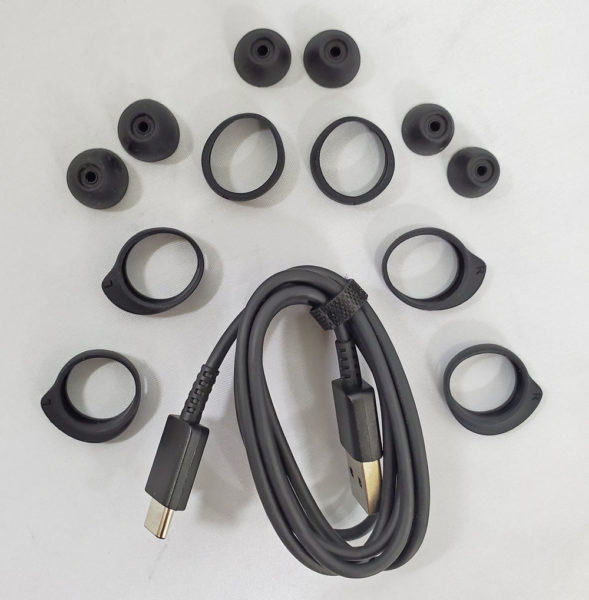
Accessories
The G-Buds come with a six hour battery life, and have a charging case that will give you a little more than just a second full charge. For true wireless this is pretty average. A USB C cable is included for the case. If you have a Galaxy S10, you can recharge the case using PowerShare simply by placing it on top of your phone. Small and Large tips and fins are also included to make sure your fit is personalized and optimal for whichever ears the Buds land in. I had no issue finding a secure fit, but I would have liked to see more options for tip sizes.
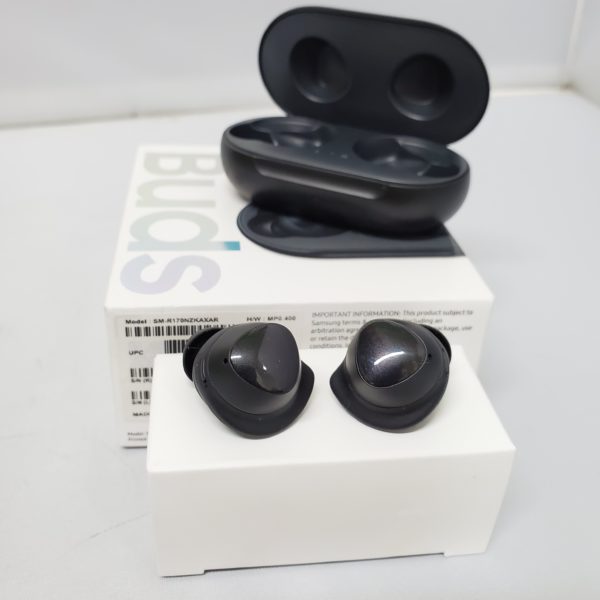
Summary
AKG’s role in designing the Samsung Galaxy Buds is apparent. I’m not surprised at all that I found them much more enjoyable than Airpods. I was surprised by the stage they carried for $130 Bluetooth in-ears that are more-or-less sold as a phone accessory. The features are actually useful, and the app didn’t feel like a cheap gimmick.
My biggest issue with them is their lack of options for high quality Bluetooth audio. Another strike against them is that, as far as I know, there is no iOS app planned. iOS users may still want to consider the Galaxy Buds if they just want have true wireless with better audio quality than the AirPods. They probably won’t though.


